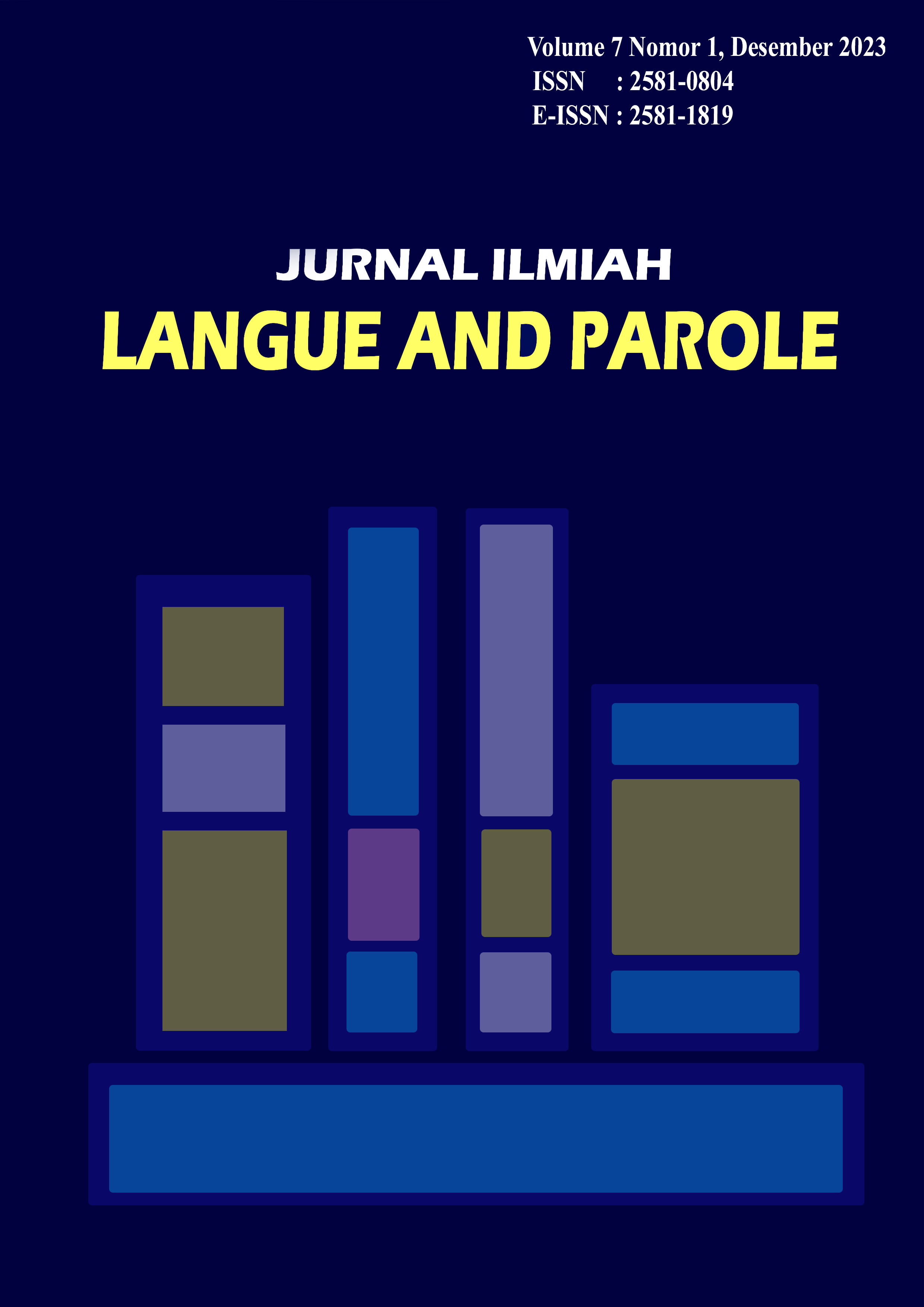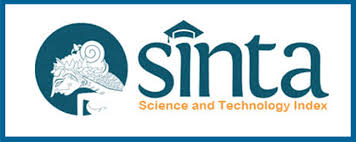Cultural Values in Idiomatic Expression of Jambi Malay Language Bungo Malay Dialect: Antropholinguistics Perspective
DOI:
https://doi.org/10.36057/jilp.v7i1.625Keywords:
Jambi Malay, Idiomatic, Cultural Values, Contextual AnalysisAbstract
This research is aimed to describe cultural values that found in the idiomatic expressions of Jambi Malay Language Bungo Malay dialect Then, the research is conducted through several steps, namely, collecting data, analyzing, and presenting the result of data analysis. The methods chosen in collecting data were observational and conversational method, by applying some techniques such as non participant observational technique, note taking technique, elicitation, and recording technique. Then, in analyzing technique, the writer used descriptive qualitative approach by using contextual analysis method in order to explain the cultural values from the expressions. Moreover, the writer used informal method for presenting the result of analysis. The result of research shows that the expressions of idiomatic from the Jambi Malay Language Bungo Malay dialect contain cultural values that have been developed in the society, especially for Jambi Malay speakers that categorized into good and bad values. Besides, the idiomatic expressions that used by Jambi Malay Language Bungo Malay dialect also contains ethics, moral, and politeness
Downloads
References
Dodi Oktariza, D. E. (2018). Popular Jambi Malay Idioms Bungo Malay Dialect.Krinok, 3(1).
Hernawan, Retty Isnendes, E. K. (2017). Bedouin idiom as a way of looking at local wisdom.ResearchGate, (September).
Husin, D. (1985).Jambi Malay Language Structure. Jakarta.
Kridalaksana, H. (2011).Linguistic Dictionary(Fourth). Jakarta: Gramedia.
Lindawati. (2012). Mamangan MinangKabau (A Studysemiotics).Ethnic Discourse, 3(2), 211–223. Nadra & Reniwati. (2012).Minang Kabau Idioms(First). Surakarta.
politeness. All of these idiomatic expressions have developed for a long time in the midst of the lives of people who speak the Jambi Malay Bungo Malay dialect so that they have become an inseparable part of the community's culture.https://doi.org/10.1360/zd-2013-43-6- 1064
Octavianus. (2006). Cultural Values in Minangkabau Expressions: A Study from a Linguistic Anthropology Perspective.Indonesian Linguistics, (24).
Rijal, S. (2018). Agrarian Culture in the Concept of Indonesian Idioms: Anthropolinguistic Studies.Diglosia, 1(1), 45–52.
Sartini, N. W. (2009). Exploring the value of Javanese culture's local wisdom through expressions (bebasan, saloka, and proverbs),IN(1), 28–37.
Sibarani. (2004).Anthropolinguistics. While.
Siska Kusumawati. (2016). Cultural Lexicon in Sundanese Proverbs.Fireworks, (April).
Downloads
Published
How to Cite
Issue
Section
License
Copyright (c) 2023 Jurnal Ilmiah Langue and Parole

This work is licensed under a Creative Commons Attribution-NonCommercial-ShareAlike 4.0 International License.








